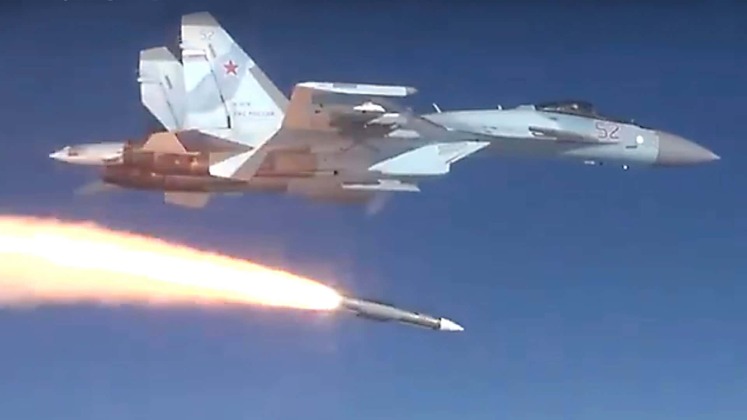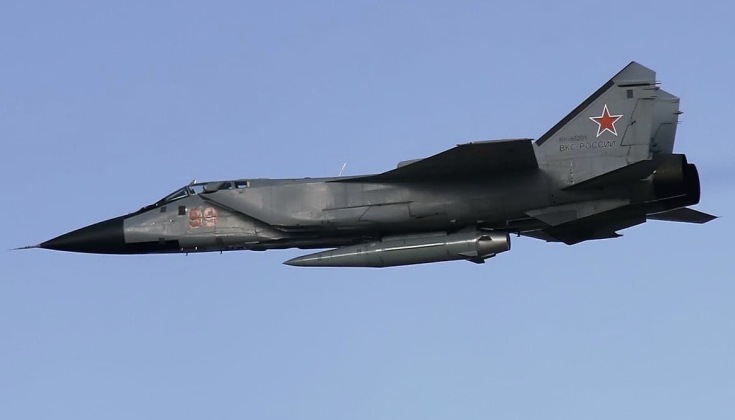In January 2022 the Russian Military began to make unprecedented deployments of high performance weapons systems to military bases on the territory of its neighbour Belarus. These deployments came amid closer integration of the two countries’ armed forces, with Minsk seeking closer ties with Moscow under the ‘Union State of Russia and Belarus’ particularly from late 2020 after Western powers were widely accused of supporting riots in the country and imposed harsh economic sanctions. At the time deployments were made tensions between Russia and NATO were also fast rising, with the Western Bloc quickly increasing arms deliveries to Ukraine as a potential escalation of Russian-Ukrainian hostilities was anticipated. The outbreak of a full scale war between Russia and Ukraine in February subsequently accelerated the rate of military integration between Russia and Belarus, while leading Russia to supply more advanced weapons to its neighbour ranging from new upgrade packages for its Soviet era tanks to technology transfers for ballistic missiles, and even modifications for its aircraft to allow them to deploy nuclear weapons under a nuclear sharing agreement.

The importance of Belarus for the deployment of Russian assets has been twofold. The territory provides a northern flank on which to counter Ukraine, which has so far been used only lightly as Russian S-400 air defences and Su-35 fighters on the territory have been employed for operations against targets within Ukraine. This notably included the world’s longest ranged aircraft shootdown at the time – the downing of a Su-27 fighter over Kiev by an S-400 battery 150km away in Belarus. Secondly, facilities in Belarus provide Russia with a more defensible position against NATO should the Western alliance seek to launch military action against it – a possibility which has been raised multiple times since the outbreak of Russian-Ukrainian hostilities in February. Weapons systems deployed to Belarus are largely complementary to the strengths of the Belarusian Military, and compensate for the deficiencies that are in most cases a result of its limited defence budget. A look at the three most notable systems deployed, all of them with significant strategic implications and all benefitting strongly from Russian strengths in missile technologies, is given below.

Su-35S Air Superiority Fighters
The Su-35’s deployment to Belarus in the final week of January followed deliveries the aircraft’s cheaper and less specialised counterpart, the Su-30SM, to the Belarusian Air Force. Su-35 units were redeployed to the country from bases in the Russian Far East, and first arrived at the Baranovichi Airfield of the 61st Fighter Aviation Base on January 26. The facility notably previously hosted Belarusian Air Force Su-27 fighters, a predecessor to the Su-35 inherited from the Soviet Air Force, before these had to be retired due to their high operational costs. Aside from a half squadron of Su-57 next generation fighters, which have also played a not insignificant role in operations in Ukraine albeit from bases in Russia itself, the Su-35 is the most capable fighter in the Russian inventory in terms of air to air performance. The aircraft can engage targets deep into neighbouring countries without leaving Belarusian airspace due to the potency of their sensors and extreme range of their R-37M missiles – which have a low hypersonic Mach 6 speed and 400km reach.
The Su-35 entered service in 2014, and was designed specifically to be able to tackle fifth generation stealth fighters such as U.S. Air Force F-22s while deploying sensors, including the Irbis-E radar, two L-band AESA radars and the OLS-35 infra red search and track system to better track and engage them. Although a single Su-35 was confirmed shot down over Ukraine, units of the aircraft have gained perhaps more experience against fourth generation fighters than any other fighter class in the world, and are credited with a very large number of kills against Ukrainian Air Force Su-27s, MiG-29s and other assets. Redeployment of these assets from the Far East was assessed to have been partly facilitated by the growing capabilities of friendly Chinese and North Korean forces in the region, which has ensured that the balance of power in the area will not be too favourable to Russian adversaries even with some of the country’s top end fighters removed.

S-400 Air Defence Systems
Redeployed in late January alongside Su-35s, S-400 systems in Belarus have played a vital role in compensating for the relative weakness of the country’s own air force while complementing S-400 acquisitions made by the Belarusian Military itself. The systems were also moved from the Russian Far East, and were expected to provide an opportunity to further familiarise Belarusian units with operations alongside them. The system’s 400km engagement range and 600km detection range against large aircraft makes deployments closer to the frontier with NATO potentially valuable, allowing Russian forces to strike targets deeper into the alliance’s territory as well as aircraft in Western Ukraine. The S-400 has increasingly come to be considered the backbone of Russia’s air defences, as its low operational costs allow it to be fielded in very large numbers to compensate for the relatively small size of the Russian fighter fleet as an arguably more cost effective assets for many defensive roles. Although the system has been superseded in many areas of performance by the newer S-500 and S-300V4 systems, the S-400 is fielded in much greater numbers, can engage many more targets simultaneously, and is better optimised to tackling fighter sized targets with stealth capabilities. The system’s longest ranged missiles can engage targets at Mach 14 speeds, and are capable of intercepting slower hypersonic missiles.

MiG-31K Strike Fighters
The latest of the three assets to be deployed to Belarus, the MiG-31K strike fighter first arrived in the country some time in mid-October. The fighter class first joined the Russian Air Force in late 2017 and represents a unique kind of aircraft with no counterparts elsewhere in the world. Where the S-400 represents a primarily defensive asset, and the Su-35 is capable of both offensive and defensive roles, the MiG-31K is a highly offensive asset with each carrying a single Kh-47M2 hypersonic ballistic missile. Although the MiG-31 was initially developed as a long range interceptor, and remains the heaviest and fastest tactical combat aircraft in service worldwide, the MiG-31K variant capitalises on the large aircraft and excellent flight performance to provide a delivery vehicle for hypersonic missiles. Its Kh-47M2 missiles are prized for their Mach 10 speeds and extreme manoeuvrability, which make them nearly impossible to intercept and leaves targets across Europe highly vulnerable. The missile’s capabilities were first demonstrated in Ukraine where they were used for limited strikes. MiG-31Ks have consistently been deployed to areas of high tension, including in 2022 to Kaliningrad and to Khmeimim Airbase in Syria both facing off against NATO forces, and previously to the Russian Arctic alongside interceptor variants of the MiG-31. Rising tensions with the Western Bloc are expected to lead Russia to expand the fleet size faster and to a greater extent, while also potentially increasing the production of the Kh-47M2 due to its potency and widely perceived cost effectiveness. An enhanced successor to the MiG-31K, the MiG-31I, was also confirmed to have entered service in August.
